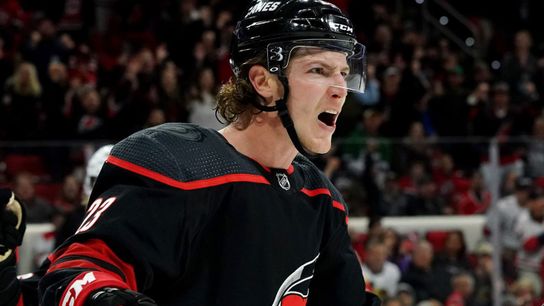Brock McGinn's last game of the 2020-21 regular season came on April 4, when he was injured in a win over the Stars.
In speaking about McGinn's status after the game, Rod Brind'Amour offered a ringing endorsement of what McGinn brought to the Hurricanes' lineup.
"That’s one guy, I can tell you, that if he comes out of the game, he’s hurt," he said. "There’s nobody I’ve been around since I’ve been done playing who’s tougher than that kid."
After the Penguins signed McGinn to a four-year contract on Wednesday that carries a $2.75 million cap hit, Ron Hextall was asked for his assessment of McGinn's game,
"He plays a real inside game," Hextall said. "He's got really good energy, physical player, plays the same way every night. We just really valued the player, but we also value the intangibles that he brings on a nightly basis and some of that stuff that he's going to bring into our locker room."
What else can we expect to see from McGinn based off of his time in Carolina? Let's take a look.
• McGinn's best season offensively came in 2017-18, when he scored 16 goals and 14 assists in 80 games. He produced at a rate just shy of his career high in 2020-21 with eight goals and five assists in 37 games. Nearly all of that production (seven goals, four assists) came in the first 16 games of the season though, bolstered by often playing on a line with Andrei Svechnikov and Sebastian Aho. By late February McGinn was shifted to the third line, and only recorded one goal and one assist in the last 21 games of the regular season he played before being injured in April. He scored a goal and two assists in 11 playoff games after returning from injury.
• Looking at McGinn's last three years in Carolina in this graphic built by JFresh Hockey, we can see that McGinn was strong defensively, ranking in the 75th percentile in the league in defense at even strength, and being a penalty kill specialist. His even strength offense and finishing ability, though, left a lot to be desired over those three years.
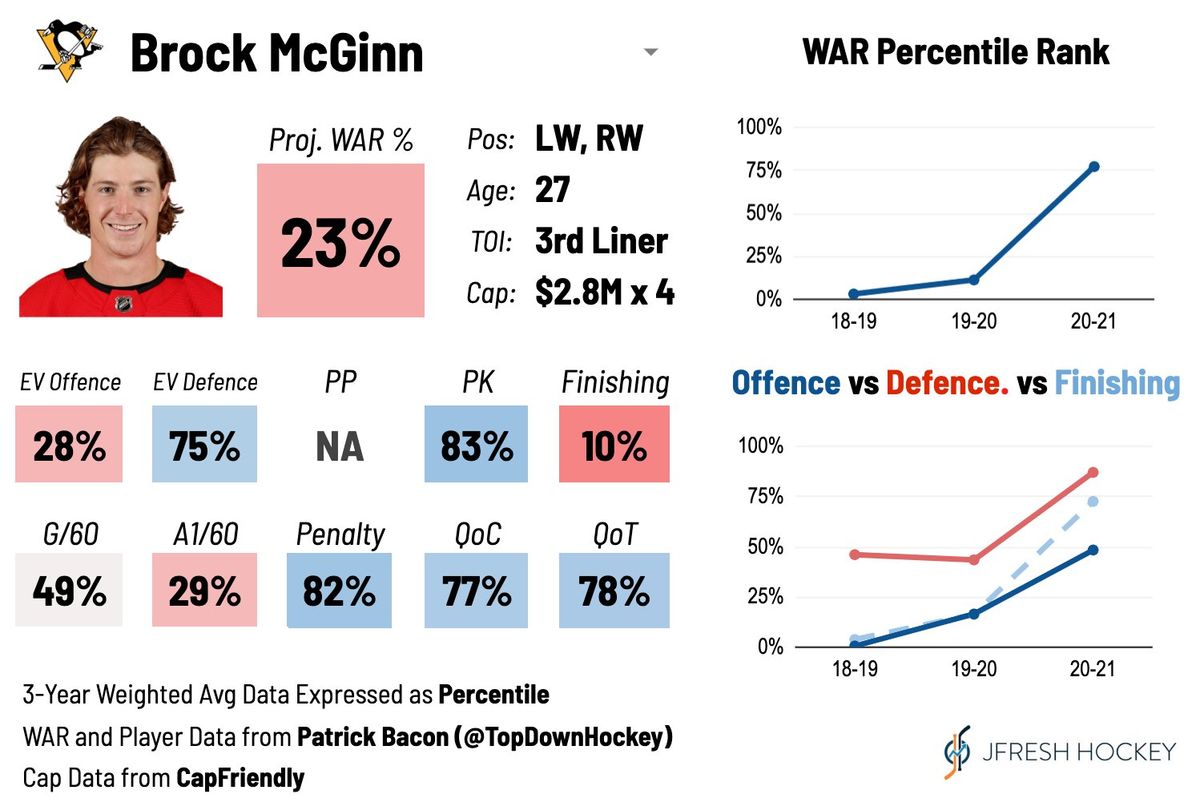
• It's worth noting that McGinn's shooting percentage at five-on-five in 2020-21 was the best of his career, at 13.73 percent. The two seasons before that were the two worst of his career in terms of shooting percentage, with 6.33 percent in 2019-20 and 6.67 percent in 2018-19.
• Looking more into McGinn's quality of competition, he was often matched up against opponent's top lines at even strength. His most frequent forward opponents last season were Patrick Kane and Alex DeBrincat with Chicago, and Brayden Point and Ondrej Palat with Tampa Bay.
• In terms of McGinn's isolated impact, 2020-21 was McGinn's best year both offensively and defensively. The isolated impact visualizations, built by HockeyViz, look at a player's contributions on either side of the puck at five-on-five, accounting for quality of teammates/opponents and deployment usage among skaters. Red areas on the charts show when a player's presence is associated with more shots than the league average, and blue is fewer. The percentage given is the change in expected goals, a stat that aims to show the probability of a goal happening, based on the quantity and type of shot taken. In looking at the charts and result percentage, you want to see more red and a positive percentage for a player's impact on the offense, and more blue and a negative percentage for a player's impact on the defense:
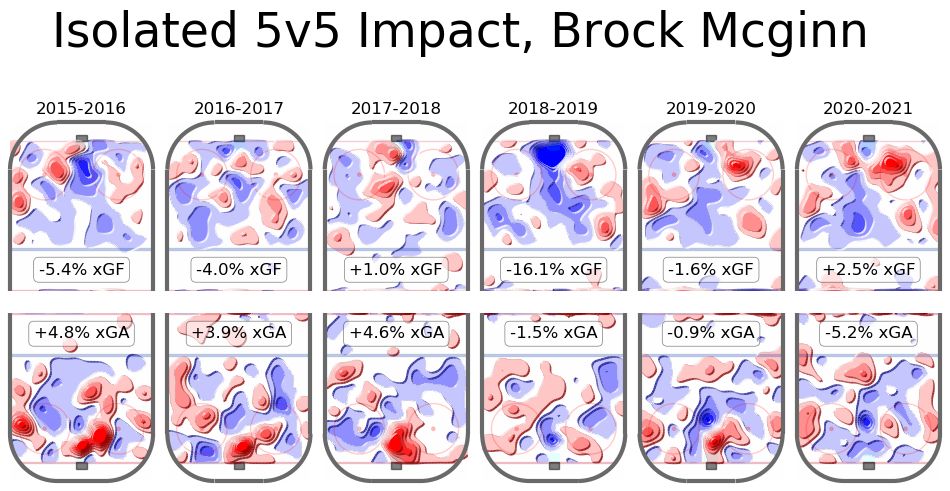
McGinn's impact on the offense and defense wasn't exceptionally significant either way, but in both cases the results were the best of his NHL career.
• McGinn posted a career-low rate of giveaways in 2019-20, recording just .67 per 60 minutes of five-on-five. His rate in 2020-21 was 1.18 per 60 minutes, which is about average for the rest of his career.
• McGinn's rate of takeaways at five-on-five in 2020-21 was the second-lowest of his career, with 1.31 per 60 minutes of five-on-five. His career-high was in in 2018-19, with 2.7 per 60 minutes.
• As seen in the data compiled by Corey Sznajder, McGinn's impact on the offense didn't exactly come from zone entries. His rate of zone entries was among the lowest of Hurricanes forwards, with 13.898 per 60 minutes of five-on-five. His percentage of zone entries in which he entered the zone with possession of the puck was also on the lower side, at 40 percent.
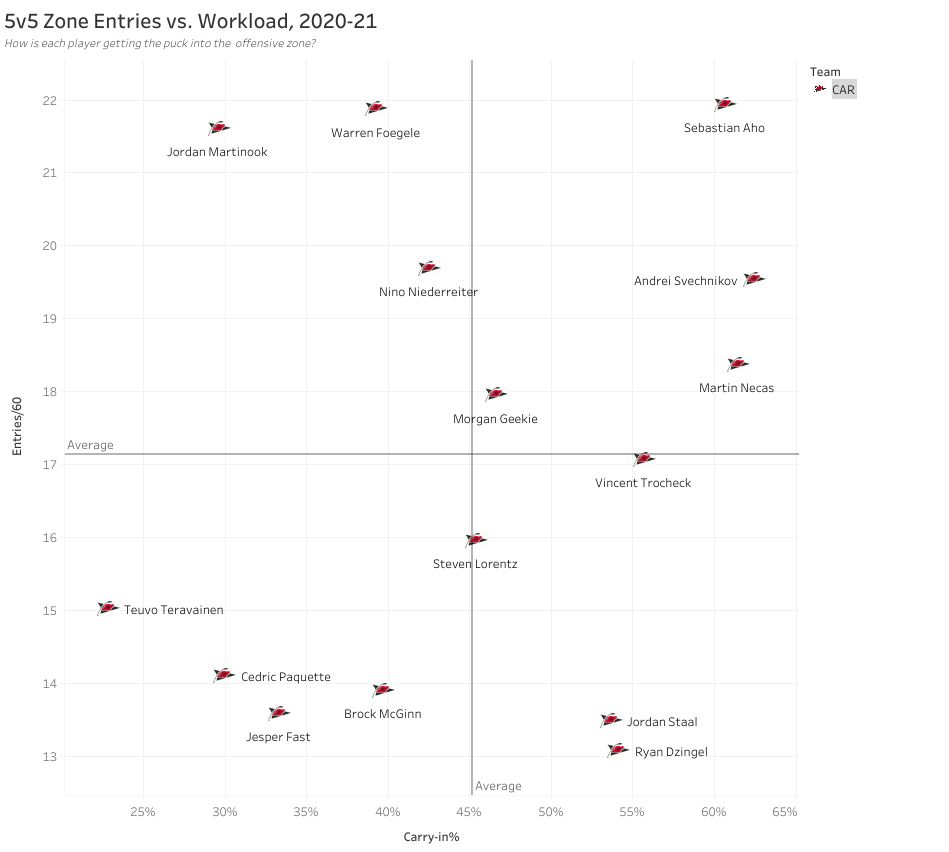
• Among Hurricanes forwards, McGinn was the Hurricane who created the most off of high-danger passes (from behind the net, or through the slot) he received, averaging 1.823 shots per 60 minutes off of high-danger passes. He wasn't making many high-danger passes himself, though:
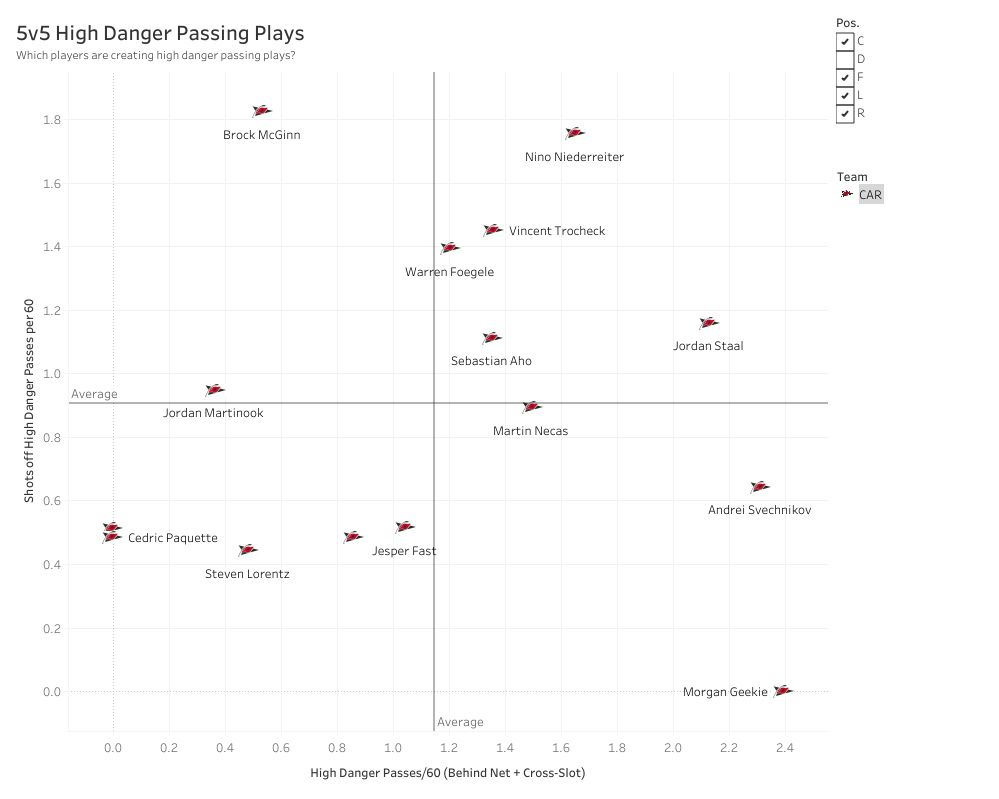
• While Hextall pointed to McGinn's physicality as a strength of his, the last two seasons saw the lowest rate of hits at five-on-five in McGinn's career. He averaged 5.37 per 60 minutes in 2020-21 and 6.53 per 60 minutes in 2019-20. In his other four seasons his rate of hits ranged from 7.4 to 8.67 per 60 minutes.
McGinn isn't a one-for-one replacement for Brandon Tanev, though his energy and physicality (albeit less in the last two seasons) and penalty-killing ability definitely gives him some similarities to Tanev. One of the more interesting things to watch for with McGinn is going to be his offensive contributions, since his production varied so much last season. Though he produced at a rate that was close to the highest of his career, nearly all of that production came in the first 16 games when he saw significant top-line time, and only two points came in those last 21 games when the quality of his linemates decreased. McGinn does have offensive potential, but the Penguins might not see that realized by putting him in the bottom-six.
